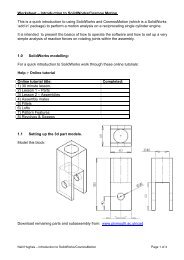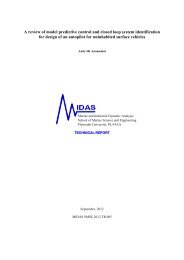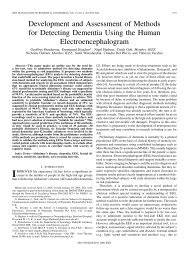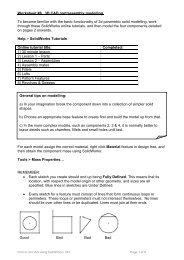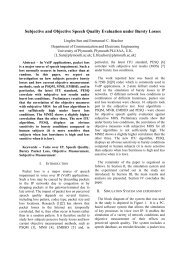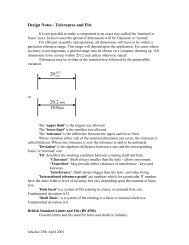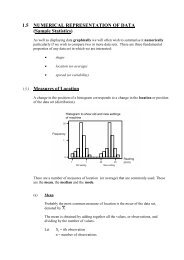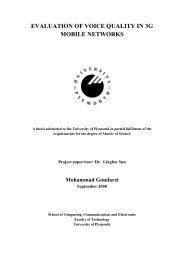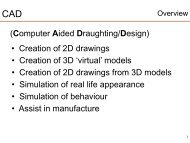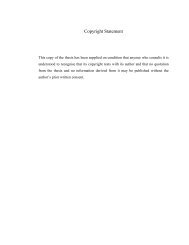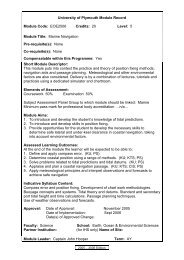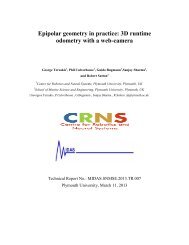Designing an Anaphora Resolution Algorithm for Route Instructions
Designing an Anaphora Resolution Algorithm for Route Instructions
Designing an Anaphora Resolution Algorithm for Route Instructions
Create successful ePaper yourself
Turn your PDF publications into a flip-book with our unique Google optimized e-Paper software.
eflects a preference <strong>for</strong> some of the possible interpretations as the <strong>an</strong>tecedent of the<br />
<strong>an</strong>aphor in these constructions c<strong>an</strong>not be defined exactly.<br />
The fifth rule defines how the algorithm works if the <strong>an</strong>aphor occurs as<br />
Argument of a Conjunction like in the following example.<br />
13) don’t turn right there, instead of that go straight past the post office<br />
As conjunctions connect clauses (which refer to event, fact, proposition etc),<br />
<strong>an</strong>aphors occurring in the argument position of a conjunction are classified as I-<br />
incompatible <strong>an</strong>d they are resolved to the element in the A-List.<br />
The sixth rule copes with constructions in which the <strong>an</strong>aphor occurs as Object<br />
of a Spatial PP. If this is the case, the <strong>an</strong>aphor generally refers to a concrete,<br />
individual object even though the lexical entry of most of the prepositions marks the<br />
preposition as ambiguous because they c<strong>an</strong> be combined either with individual or<br />
with abstract entities. In the following examples the <strong>an</strong>aphor is ambiguous because it<br />
is the object of <strong>an</strong> ‘into’-, ‘in’-, ‘be<strong>for</strong>e’- or ‘after’-PP. The object of these<br />
prepositions is either <strong>an</strong> abstract object as in “go into/in the middle” or it is a<br />
concrete, individual entity as in “go into/in the car park”. ‘After’ <strong>an</strong>d ‘be<strong>for</strong>e’ are<br />
also ambiguous but in a different way because they are used as prepositions or as<br />
conjunctions. If they function as prepositions their object refers to concrete,<br />
individual objects while arguments of conjunctions refer to abstract objects. Again,<br />
this rule is defined with respect to the domain so that it c<strong>an</strong>not be generalised <strong>an</strong>d<br />
tr<strong>an</strong>sferred into other domains.<br />
3.4 Salience-List, Implicit S-List <strong>an</strong>d Abstract-Object-List<br />
The Salience-List (S-List) includes all discourse entities which match the constraints<br />
of the <strong>an</strong>aphor actually processed <strong>an</strong>d which are highly salient at this processing point<br />
in the discourse. As previously explained, applying selectional restrictions rules <strong>an</strong>d<br />
employing inference mech<strong>an</strong>isms not only defines the properties of the entities stored<br />
in the discourse model but also determines the properties of the <strong>an</strong>aphor. The<br />
properties of the <strong>an</strong>aphor are used as constraints <strong>for</strong> filtering the entities from the<br />
discourse model. Only discourse entities mentioned in the same or in the previous<br />
34



